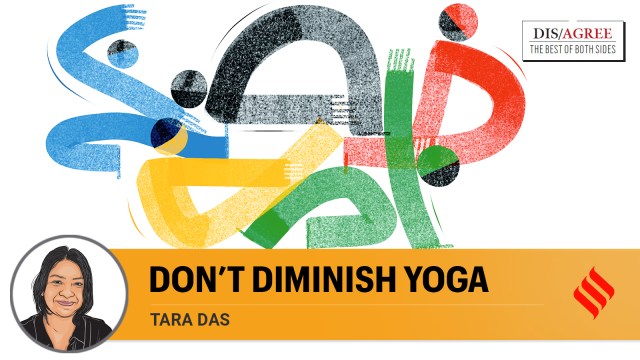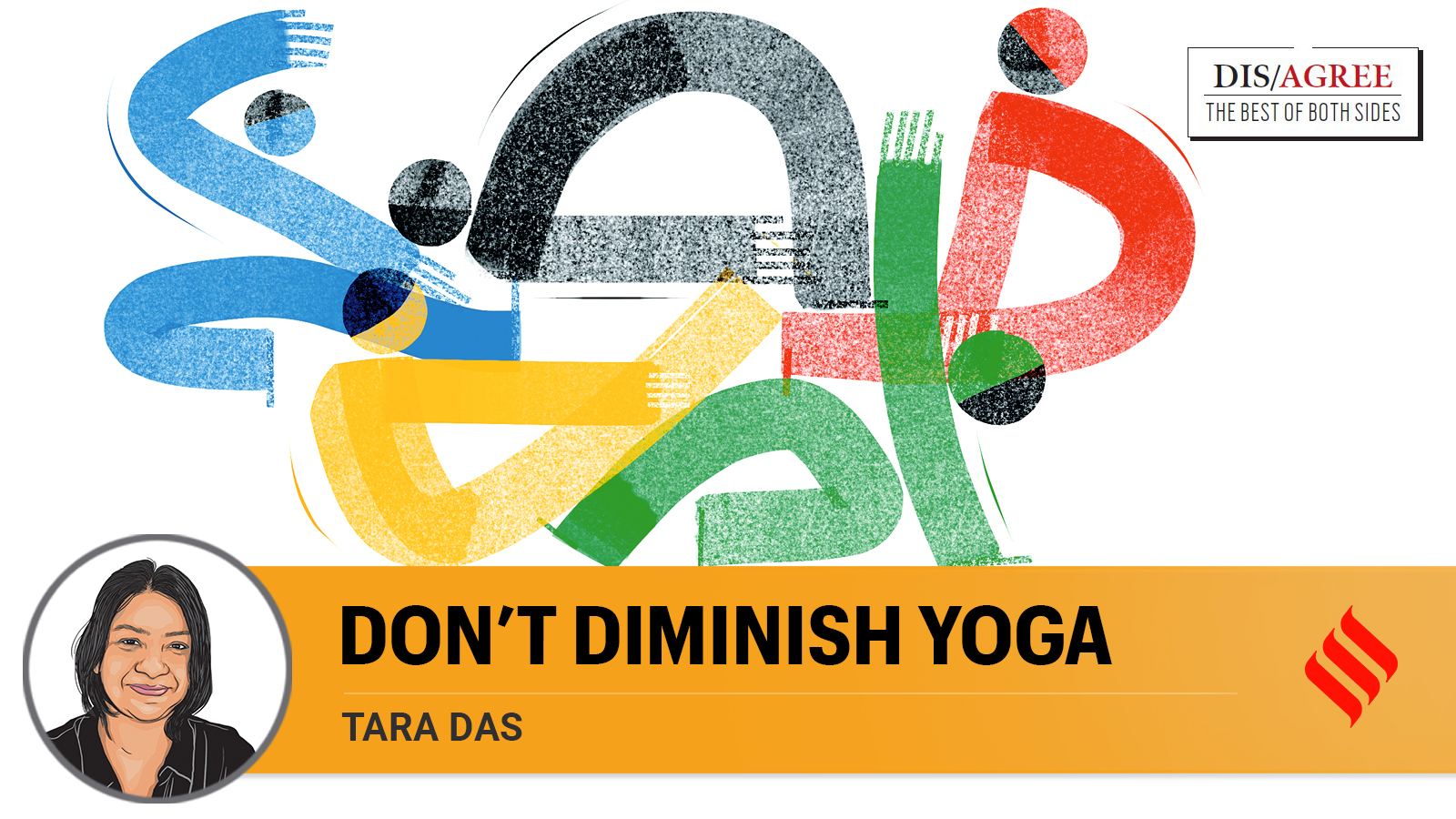
Consider the instruction on yoga as you would Hindustani music. There is a structure of notes under which your discipline is framed. These are the eight limbs of yoga, the ashtanga. Within that framework of what is sought to be achieved — exiting the cyclic entrapment of the mind from birth to death — gurus, commentators, texts and students have had the freedom to elaborate stylistically.
Among the 196 sutras of Patanjali’s Yoga Sutras, only four refer to asana, (2.29, listed among the eight limbs along with self-restraint, discipline, breath control, sense withdrawal, concentration, meditation and absorption; 2.46, how the asana should be held “Sthirasukhamasanam”, “steady and comfortable should be the posture”; 2.47, perfect the posture through meditation; and 2.48, which avers that perfection brings freedom from duality.) While this is often seen as an indication that asana is not intrinsic to yoga, that is incorrect. The practice itself is drawn from ancient texts such as the Hatha Yoga Pradipika (15 asanas), Gheranda Samhita (32), Hatha Ratnavali (84), Tirumantiram (126), Yoga Yajnavalkya (8), Vasistha Samhita (10), Ahirbudhnya Samhita (10), Trishikhibrahmana Upanishad (16), Rudrayamala Uttara Tantra (54) and so on. Ved Vyasa’s commentary suggests the asanas for sutra 2.46 were drawn from these clearly pre-existing sources. Suffice to say, between schools and practitioners, a definition of what is defined as yoga is dynamic.
The Yogatattva Upanishad says, “asanani ca tavanti yavantyo jivajatayah” — “there are as many asanas as there are living beings”. The Rudrayamala Uttara Tantra puts it at 100 crore: “shatalaksha sahasrani asanani mahithale”. Eighty-four are said to be precious to Lord Siva, the Adi Yogi. You can spend, as yogis say, a lifetime practising and still not claim expertise. Given everything that yoga can be, there is a need to define what yoga is not. And yoga is not an Olympic sport, any more than the stilling of mental factors, cessation of chitta, can be one.
To reduce yoga to posture, asana, alone discounts the other seven limbs. Further, there are other paths of yoga. You may be a karmayogi, a jnanayogi, or a bhaktiyogi, using action, wisdom or devotion. There are yogas in the schools of tantra. To elevate asana, which falls under rajayoga, the harnessing of the rajas tattva (the bodily drive to subdue oneself) without contextual learning is a limited understanding of the practice.
Yoga is a higher calling to balance, not necessarily on your head. A lifelong yogi may find themselves limited in mobility as they age. Knees inflame more easily, the back takes a beating, “bouncebackability” of muscle and ligament is slower. This does not make them any less of a yogi. Yoga does not move one against the natural process of the body but positions one within it. Each resistance of the body is teaching the yogi something about their spiritual, cognitive, emotional or physical boundaries and capacity. Each day a yogi comes to their mat anew, in the present moment, responding to body and mind as they are. So, how would one measure “failure” or “success”? By medal tally?
To define yoga by callisthenics alone is what has led to a proliferation of yoga schools and exorbitant Teacher Training Certifications. People now claim to be certified in “kundalini” yoga after a one-month boot camp of 500 hours. Worse, Western science evangelists put such modular yoga under a lab observation protocol and declare it unsafe. It is not a Western conspiracy against yoga. Practised without its philosophical framework, yoga, as any form of sadhana, or progressive meditative practice, can create impacts ranging from physical disability to nervous breakdown. Self-appointed experts have proven to be sexual predators. This is because the claim of self-mastery promises safety, self-control and self-awareness. Those who cannot certify these should not stand for yoga on any podium. The race to be seen as proficient by physical fitness alone harms the essence of yoga.
The practice of yoga carries a tangible body, mind, spirit impact. Just as ingested alcohol slows the mind, from breath to consumption of all kinds, food, speech, thought, sexual conduct, cravings constitute the resultant asana. Mastering an asana comes by understanding this chain of causality and how to reduce its impact. If yoga is not transformative, it is not yoga.
The Olympics can test physical stamina and speed at best, but to a genuine practitioner, the compliance of the body is just a barometer to the mind. Genuine yoga does not have space for competition and competition has no space for yoga.
Das is a Mysuru-based author, mind-body-spirit therapist and a practitioner



